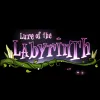Take a look inside 4 images
Lure of the Labyrinth
Pros: Creative representations of mathematical concepts that require deeper thinking with rich supplements for teachers.
Cons: Can be frustrating for students (and teachers) who don't have the time, patience, or ability to work through it.
Bottom Line: An excellent enrichment activity for advanced students; otherwise, a lot of handholding may be necessary.
It may not be an efficient or appropriate activity to just give to the whole class as an assignment. It'll work best with advanced students that need extra challenges. If you do want to try it out with a whole class -- potentially as an activity for when a sub is in the room -- students may want to team up using the built-in team chat features. This will make it a bit easier, and help students build collaboration skills. Teachers can also provide advanced students with Lure of Labyrinth early, and then have those advanced students act as guides and helpers later when opening up the game to the whole class.
Lure of the Labyrinth is a colorful, atmospheric puzzle game that gets players to explore mathematical concepts, but it leans heavily on trial-and-error. There is a lot of point-and-clicking to make the character wander the hallways and figure out where to go before getting to the puzzles. The puzzles are creative and deep, but they completely lack direction. Additionally, the administrator's guide is not very helpful when it comes to explaining the puzzles. I actually found myself looking for cheats and hints online just to get through some of them.
The narrative is delivered via a comic book with amusing illustrations and dialogue; it's a good way to integrate some reading into what's otherwise a math game. The math concepts woven in are strong and tuned to standards, but frontloading the students may be necessary unless they have a lot of time to figure things out on their own (as the game was intended to be played). Often, there are lights that blink and things that move, and students won't know what to click on, so it requires a huge amount of pattern recognition and trial-and-error. While this helps build skills, struggling students could use hints to nudge them along. In addition, the puzzles can get quite difficult, and may prove too much for some students.










